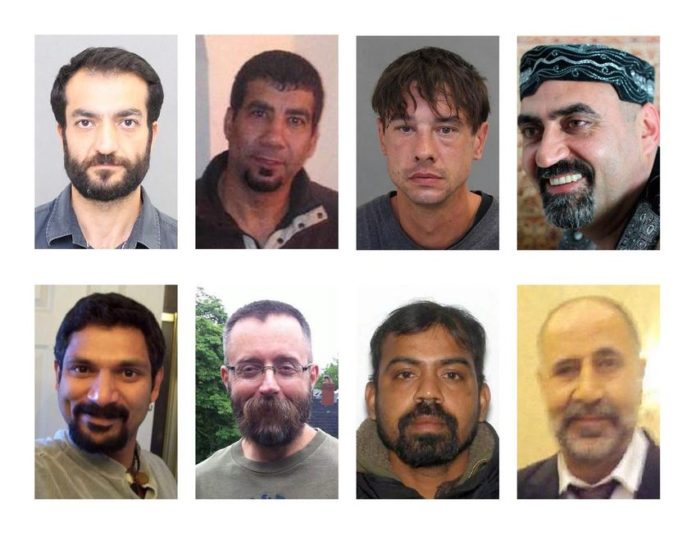A new Canadian true-crime documentary about notorious serial killer Bruce McArthur is the first “super deep dive” broadcast about the murders of eight men in Toronto’s gay village, says showrunner and co-executive producer James Buddy Day.
“Catching a Serial Killer: Bruce McArthur” begins streaming on Super Channel Fuse April 30.
The Canadian release comes just over two weeks after its U.S. premiere as part of Serial Killer Week on NBCUniversal’s true-crime Oxygen channel. The American network commissioned the film, made last summer in Toronto and produced by Toronto’s Peacock Alley Entertainment.
The McArthur documentary was released in the U.S. days before a review critical of the Toronto police force’s handling of missing persons cases in the Gay Village was released. Retired Ontario Court of Appeal justice Gloria Epstein wrote there were “serious flaws” in how the disappearances, including the McArthur case, were handled by police.
Typical of serial killers, McArthur targeted marginalized people, in this case primarily gay men of colour, some of whom were leading double lives in Toronto’s LGBTQ community.
“It’s kind of a stark reminder that not everyone is policed equally, unfortunately,” Day says.
In 2019, McArthur pleaded guilty to first-degree murder in the deaths of Skandaraj (Skanda) Navaratnam, Abdulbasir Faizi, Majeed Kayhan, Soroush Mahmudi, Kirushnakumar Kanagaratnam, Dean Lisowick, Selim Esen and Andrew Kinsman from 2010 to 2017.
The documentary includes interviews with Toronto police investigators Det. David Dickinson and Insp. Hank Idsinga and Toronto Star crime reporter Wendy Gillis, who has covered the case extensively since 2018. It also includes an interview with a McArthur victim who survived, a man identified as John Doe, who tells a chilling story of being abducted and nearly strangled.
“We interviewed victims. We interviewed both investigators. We interviewed witnesses, advocates for the victims, we really brought everyone together and tried to really ask the questions of, like, how could this have happened? Not just what happened,” says Day.
Serial homicide expert Jooyoung Lee, an associate professor of sociology at the University of Toronto, also appears in the documentary.
He explores how McArthur fits the profile of many serial killers; skilled at deception, opportunists who enjoy having control while preying on marginalized victims. He also speaks about the systemic racism that led to lack of police followup when men of colour started going missing in the Village.
He hopes the documentary will bring a deeper understanding “of the many factors that went into creating Bruce McArthur and abetting his crimes.”
Lee details the repressed shame McArthur would have felt given his upbringing, along with anger and resentment he would have felt toward himself, his family and the gay community by being attracted to men.
The documentary points to a tipping point after McArthur, who previously lived as a straight man with a wife and children, was outed to his family by a male lover.
“The man outed him (McArthur) to his family, to friends, and that gave him kind of this really high level of resentment toward the gay community that may or may not have contributed to what he did,” Day said.
“I don’t think people often pause to think about the larger social factors that go into enabling a killer like Bruce McArthur to continue getting away with his crimes,” says Lee. “So I’m hoping that, in short, they’ll come away from the documentary with a more robust picture of how complex this is.”
Audiences south of the border are learning about McArthur’s murders for the first time, says Day, and there’s a huge appetite for these stories in what he calls a “golden age” for true-crime programming.
There were some U.S. media reports in 2018 when Toronto police discovered dismembered body parts of some of the eight missing men killed by McArthur, on the property of Karen Fraser, an unwitting client who hired him as a landscaper.
Fraser is interviewed in “Catching a Serial Killer” and describes the shock of learning about McArthur’s double life. She says two of McArthur’s victims worked with him on jobs in her yard.
Loading…
Loading…Loading…Loading…Loading…Loading…
The voice that’s missing is the killer’s. Day said he repeatedly wrote to McArthur, now serving life in prison, asking him to be part of the documentary. McArthur did not reply.
Day specializes in true-crime programs, an increasingly popular genre. “I’ve had pretty good success at talking with serial killers over the years,” says Day.
He interviewed cult leader Charles Manson not long before his death for the 2017 documentary “Charles Manson: The Final Words.”
He tries to approach true crime stories with sensitivity, not glorifying a serial killer, he says.
“The idea that the victims were marginalized, to the fact that the police really just gave up looking for them until they found their bodies is a pretty compelling story and it deserves to be told,” says Day. “We’ve got to make sure that never happens again.”


/https://www.stcatharinesstandard.ca/content/dam/thestar/entertainment/movies/2021/04/29/true-crime-doc-about-bruce-mcarthur-hints-at-possible-motivation-of-toronto-serial-killer/victims.jpg)
/https://www.stcatharinesstandard.ca/content/dam/thestar/entertainment/movies/2021/04/29/true-crime-doc-about-bruce-mcarthur-hints-at-possible-motivation-of-toronto-serial-killer/jooyoung_lee.jpg)






